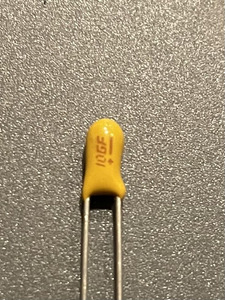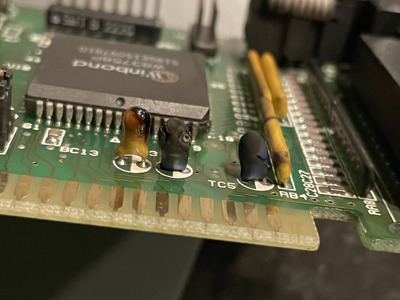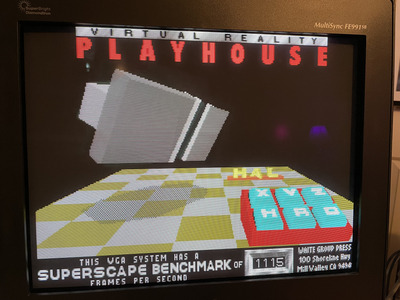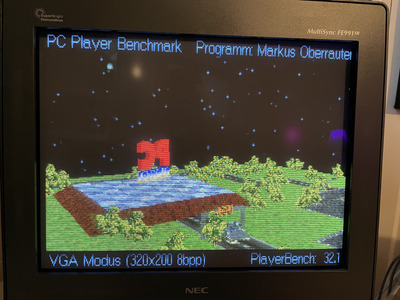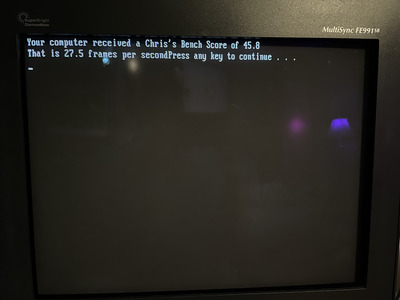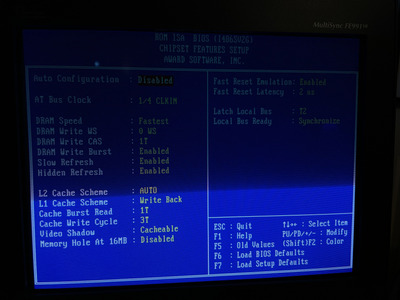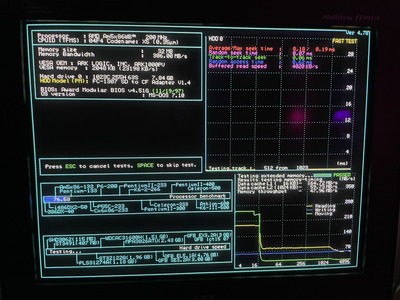Shared in previous posts about that XT PC that i have been slowly setting up - here and here.
Finished the job recently.
Pretty satisfied with the outcome.
Figured i should share the result.
As mentioned in the linked above posts - Tandy 1000 SL is used as the basis of the rig.
Had to overcome the initial resistance to use branded assembly because they are weird, but Tandys are actually pretty ok - they have good bones and only thin layer of "stain" on top.
Initially it was supposed to be more of a Tandy flavored setup but that didn't bode well with my aspiration for top performance, so things quickly resolved into an XT - or better - an XT BEAST.
Still thinking how to name the contraption.
Maybe XTandy or perhaps Mandy - for Modern Tandy ...
--- Assembly
base: Tandy 1000 SL
cpu: 16MHz rated NEC V30 HL
fpu: 10Mhz rated Intel 8087
ram: 640Kb 80ns rated Hynix
vga: Western Digital WD90C00-JK 512Kb / Tandy video adapter
hdd: XT-CF-lite rev.2 + 2Gb CF card
sound: ESS 1868F + SC-88 Pro MIDI brick / Tandy sound system
modem: unknown brand - discarded, read below
ram card: Acculogic RAMpAT! - discarded, read below
keyboard: Tandy XT
mouse: MS 2 button COM1
joystick: Tandy (2 axis, 1 button) + adapter
OS: DOS 6.22 (started with DOS 4.01, but 6.22 has smaller memory footprint)
--- Components
Assembly from the outside with partial retro-bright. Monitor needs finishing touches, but the floppy drive panel is now pristine bright.
Used acetone for the brightening, as explained here.
Unfortunately the plastic used in the joystick case is different and does not like the acetone - leaving it for another day.
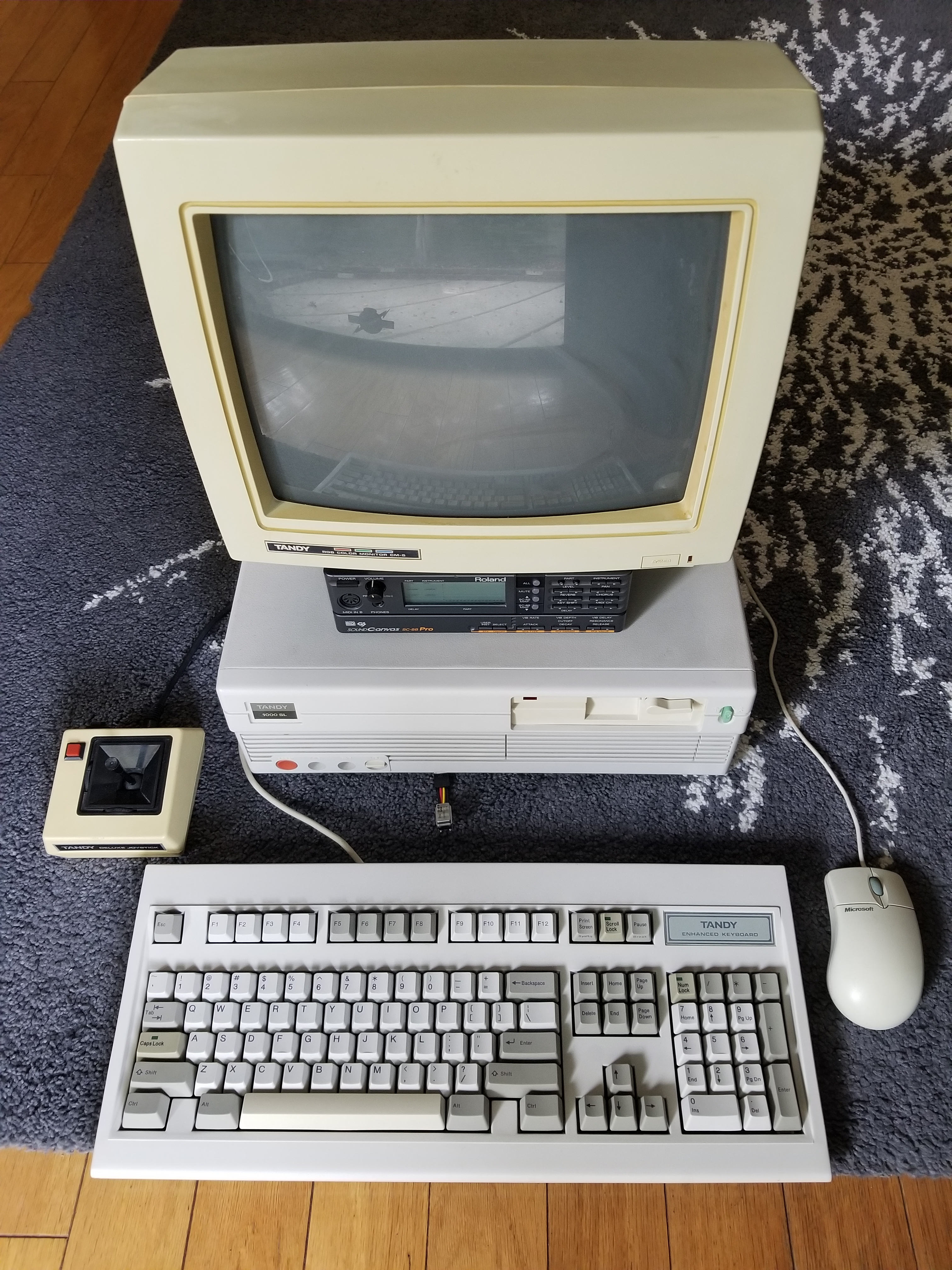
Plus printed documentation:
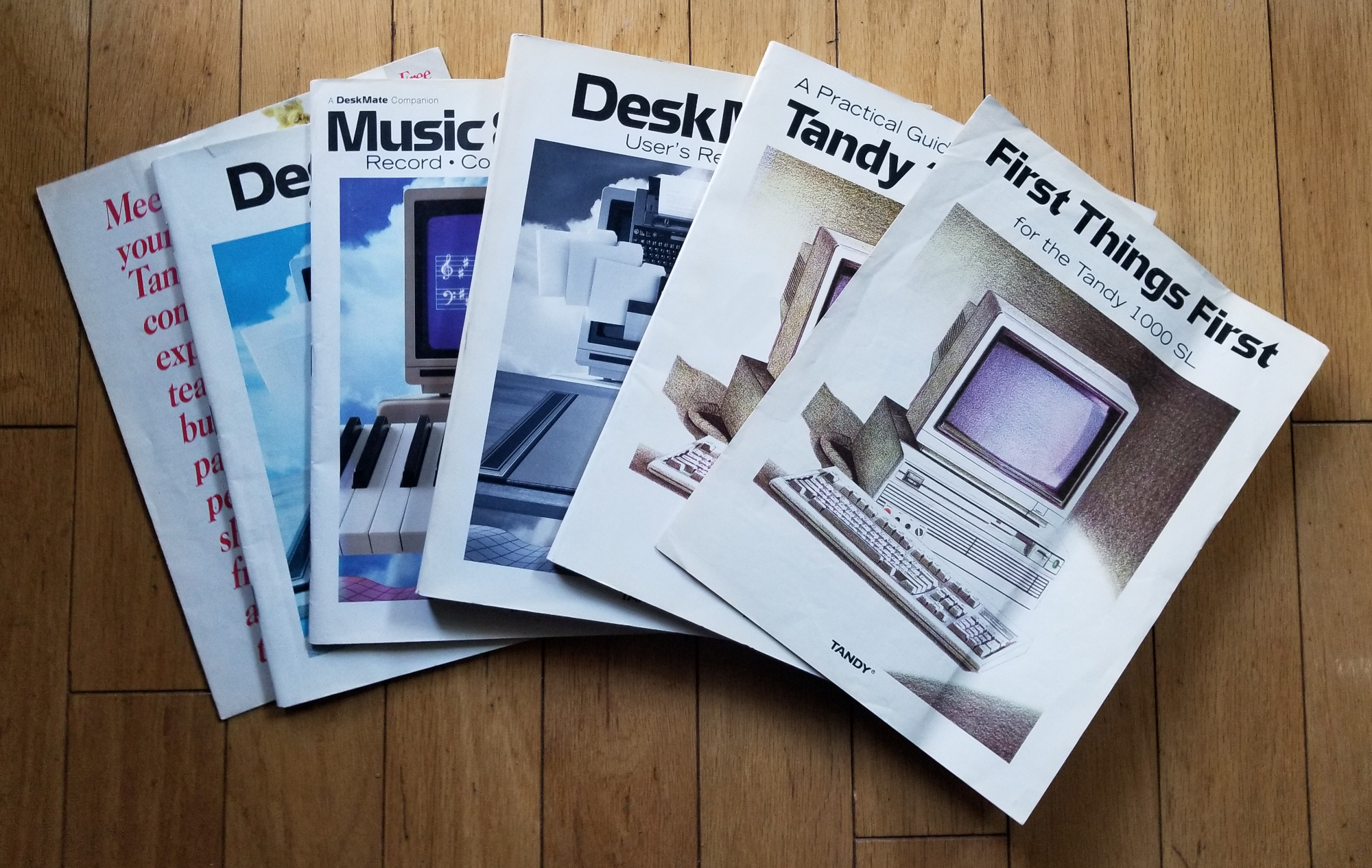
Assembly on the inside:
FPU gets quite hot.
Decided to slap heatsink + fan. Just in case.
CPU got coverage too.
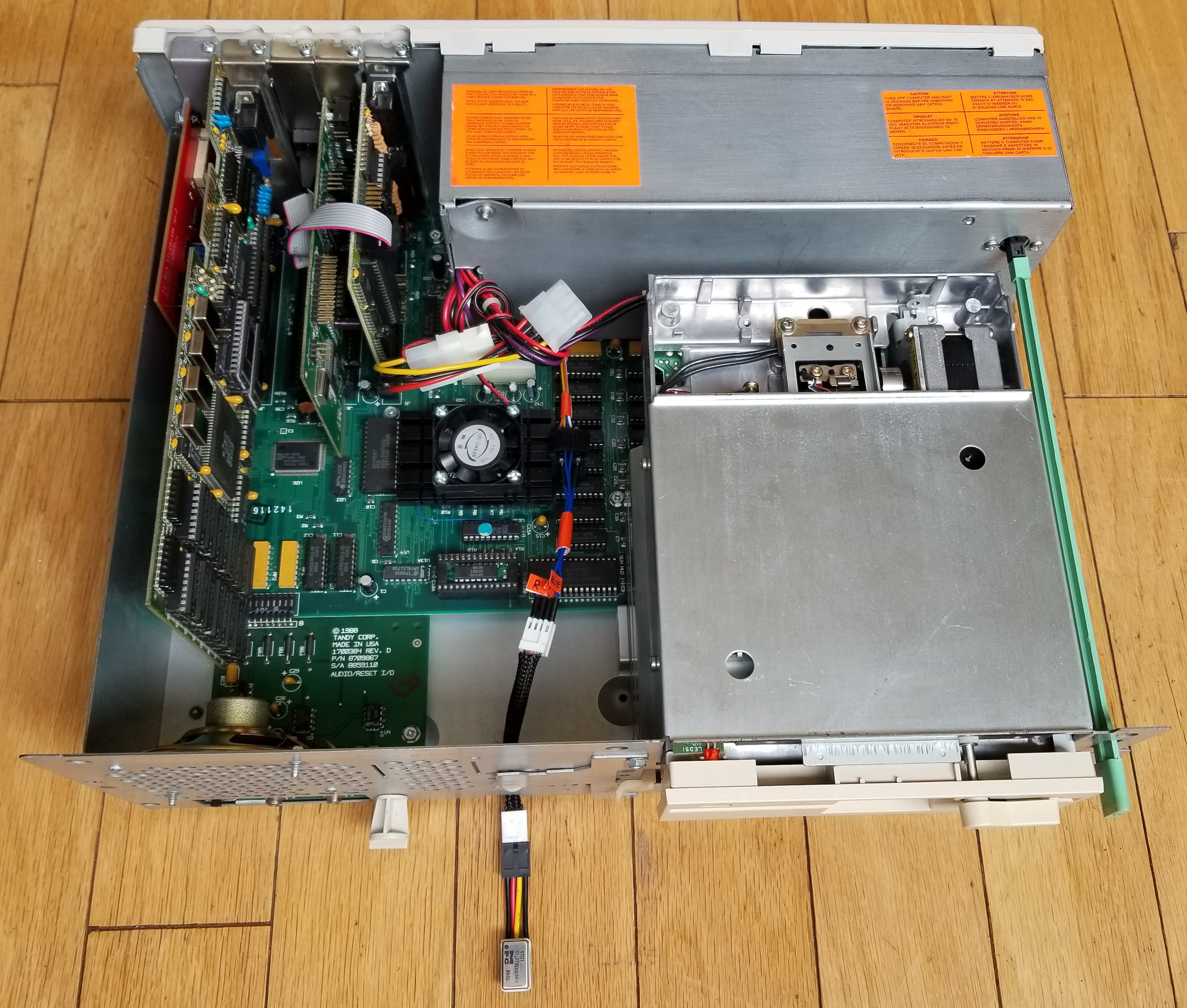
Crystal oscillator is located under the PSU module which makes it inaccessible - a deal breaker for overclocking.
Solution in 2 stages.
First is a small non-intrusive contraption for easy access inside the case:
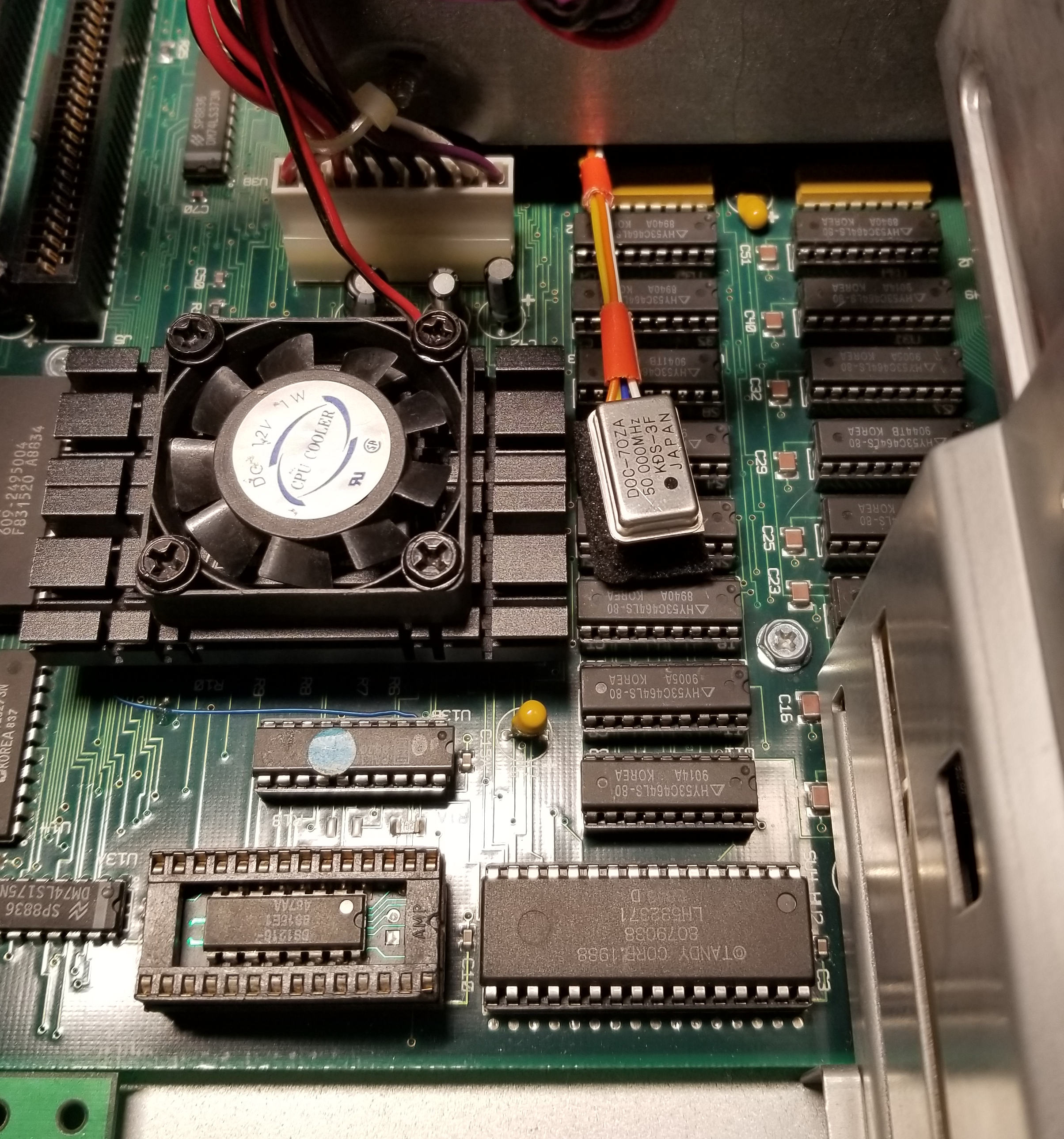
Extension of it for external access.
Modular - velcro piece holds a second oscillator socket that plugs into the base one.
Easy to add/remove if needed.
Shows up outside discreetly under the front panel without preventing the case to be opened by pulling the front panel - slash - cover.
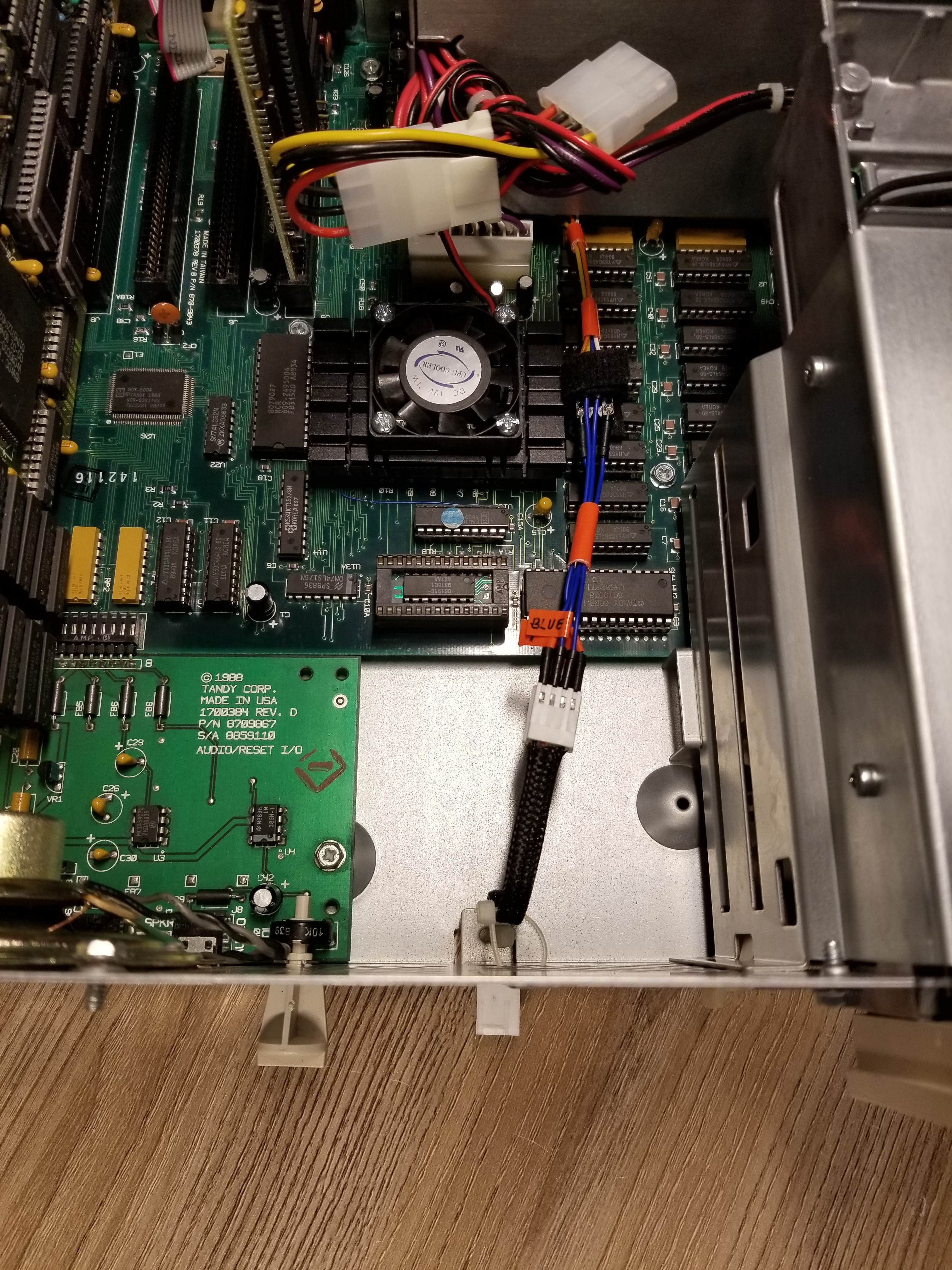
The external oscillator module (socketed).
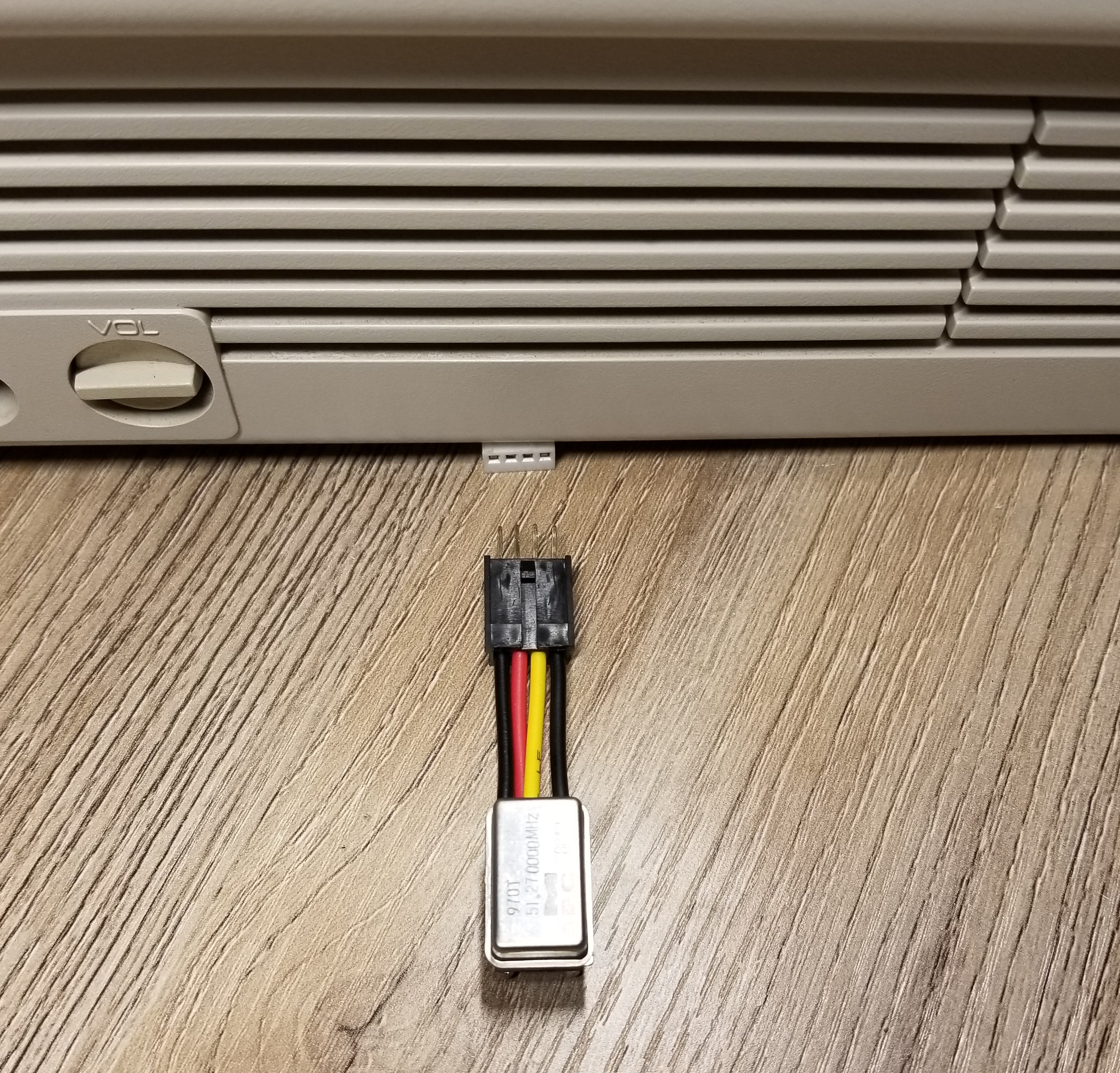
NEC V30 HL:
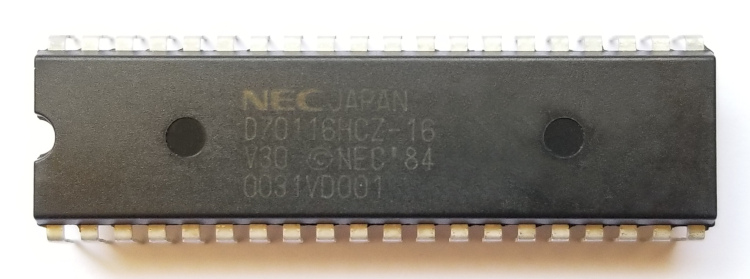
Intel 8087:
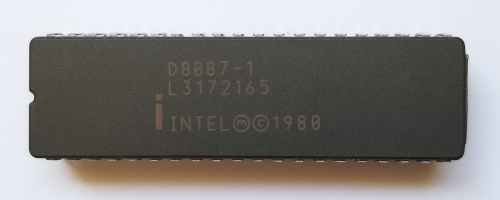
EDIT:
Started with 120ns rated chips that couldn't overclock very well.
Moved to 80ns Hynix, but knew that there are 70ns rated chips of the same type as well.
Not far ago tried to switch to 70ns OKI, but surprisingly they don't scale as well as the Hynix ones.
After a lot of testing went back to 80ns Hynix.
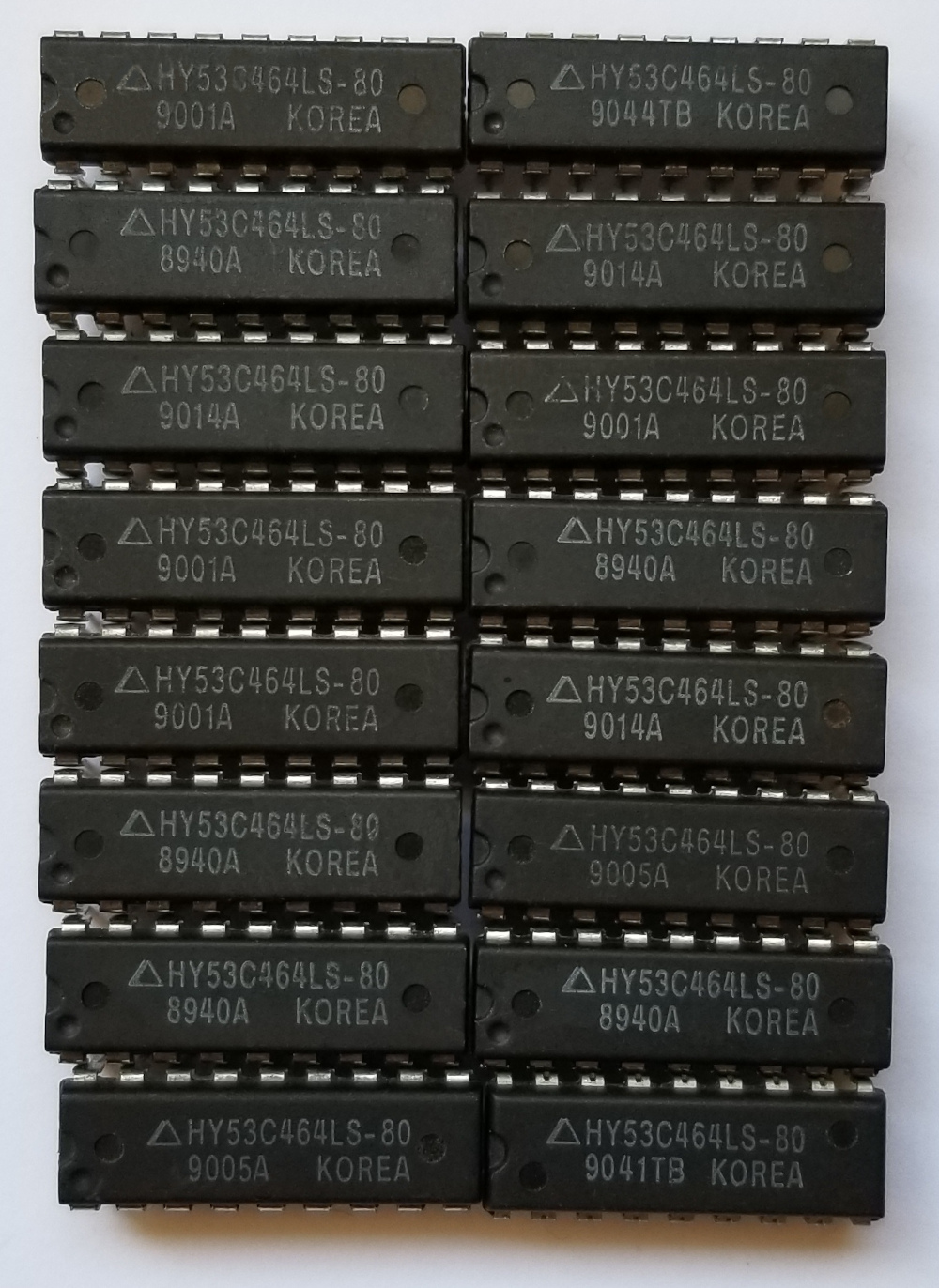
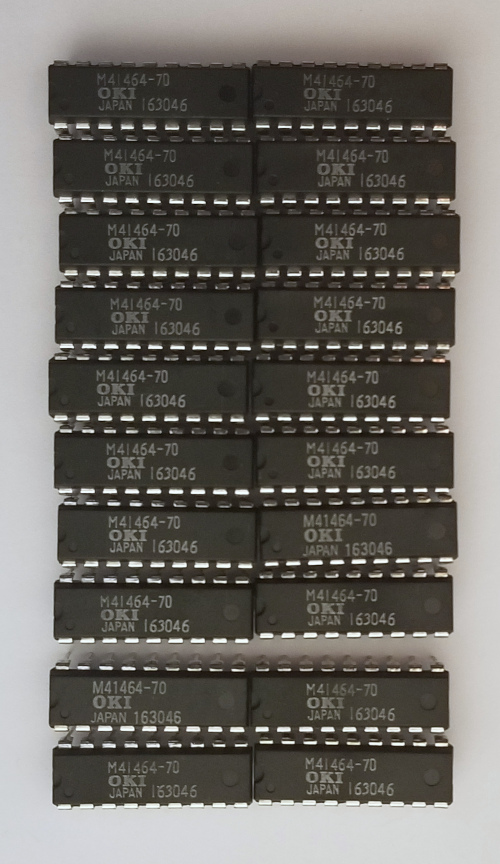
Tandy video adapter is cool and everything but lets be real - VGA is cooler.
Started with latest revision Diamond SpeedSTAR 24 as it is one of the fastest things for 16-bit ISA but had a nagging feeling that i should not be so confident in it for the 8-bits.
Tested over 30 ISA graphics cards. Most of them listed one way or another in previous posts.
Turns out the fastest thing for XT machines is Western Digital WD90C00-JK 512Kb with close second Diamond Flower VG-1000 rev.2.
The Diamond SpeedSTAR 24 and other fast cards didn't do that well - apparently they moved on and focused on 286/386 class hardware.
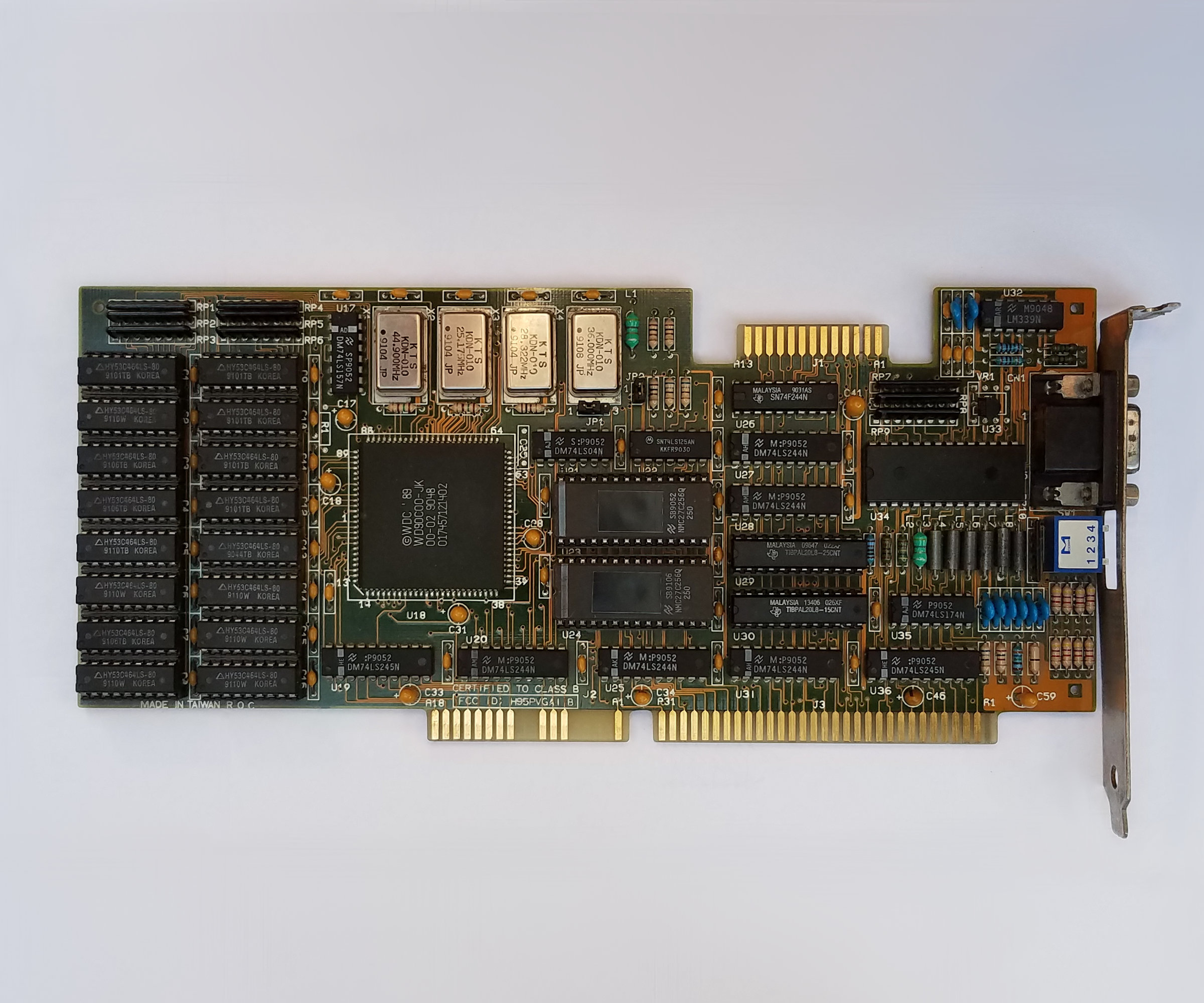
One thing i noticed in the past about the Diamond Flower card is the unusual ASCII font.
For reference:
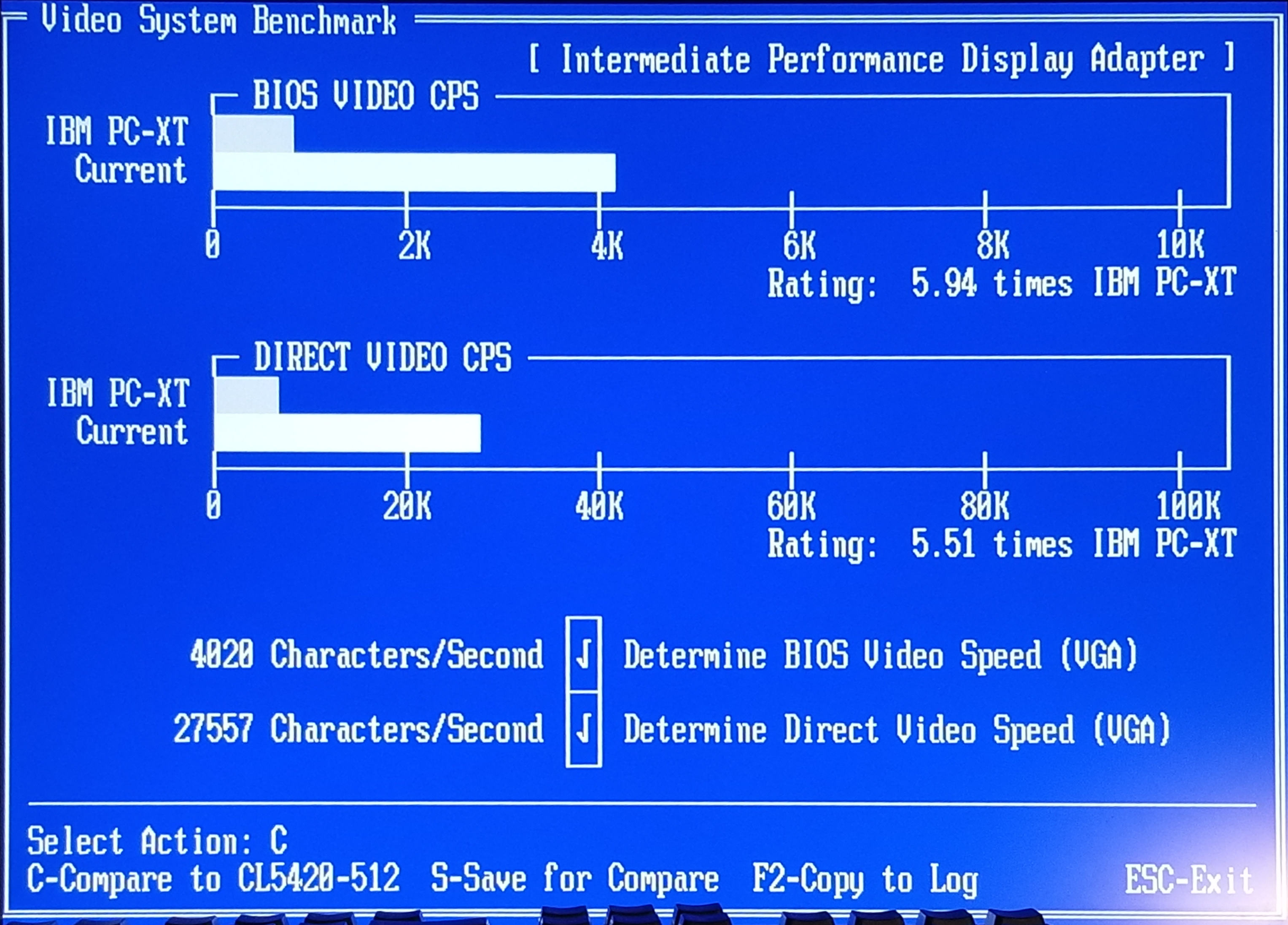
Recently realized why.
Once i plugged it into the 12" Tandy monitor it become very clear - letters are much more readable than the standard fonts we are used to.
Lo-tech XT-CF-lite rev.2:
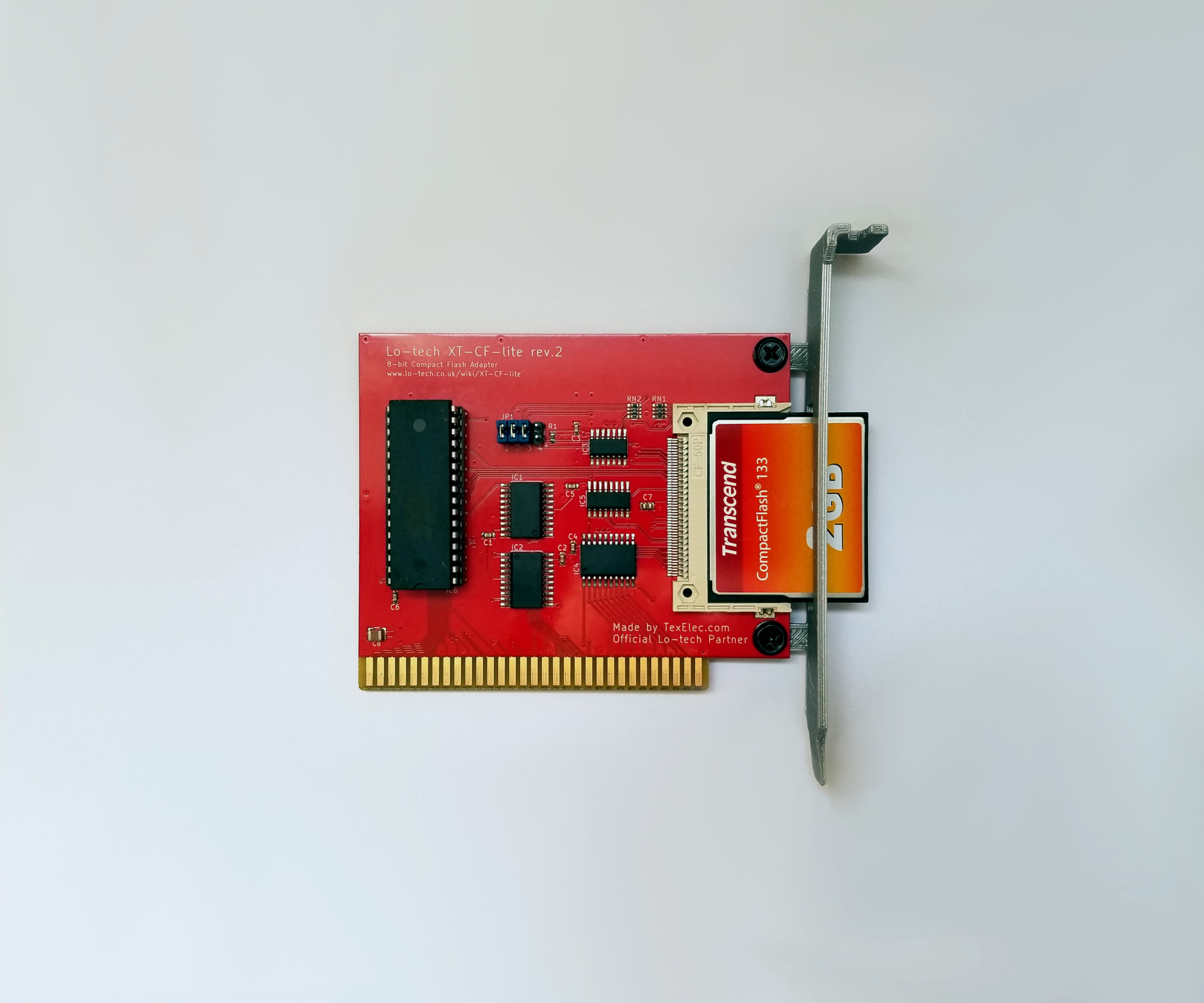
with custom 3D printed bracket:

Tandy has a cool buzzer (for its time) but more appropriate sound option is needed as well - ES1868F.
Actually thinking to swap the ES1868 with TexElec's SAAYM/GameBlaster clone, or maybe Snark Barker.
So the name Mandy (Modern Tandy) fits even better.
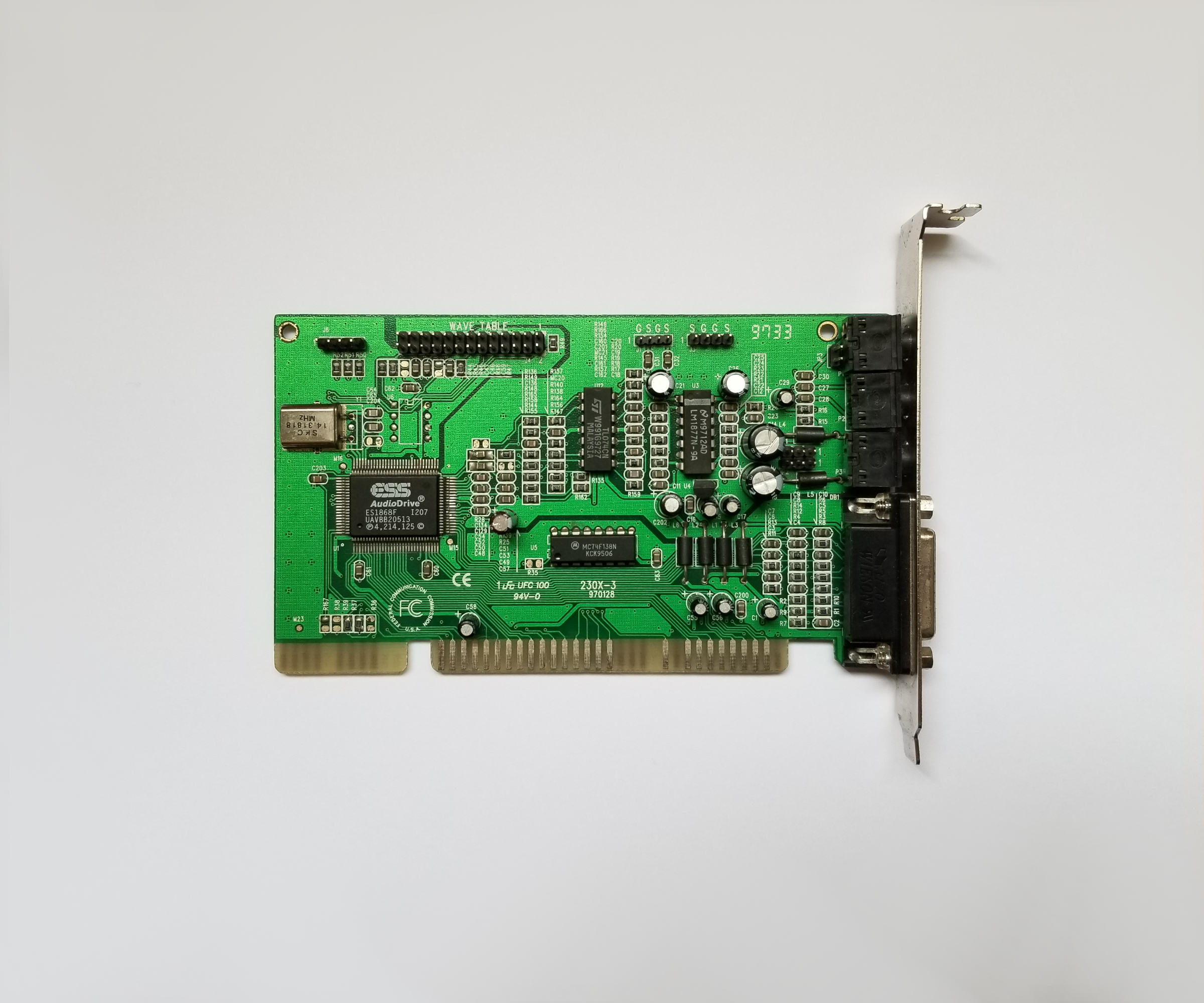
Unnamed COM/LPT card:
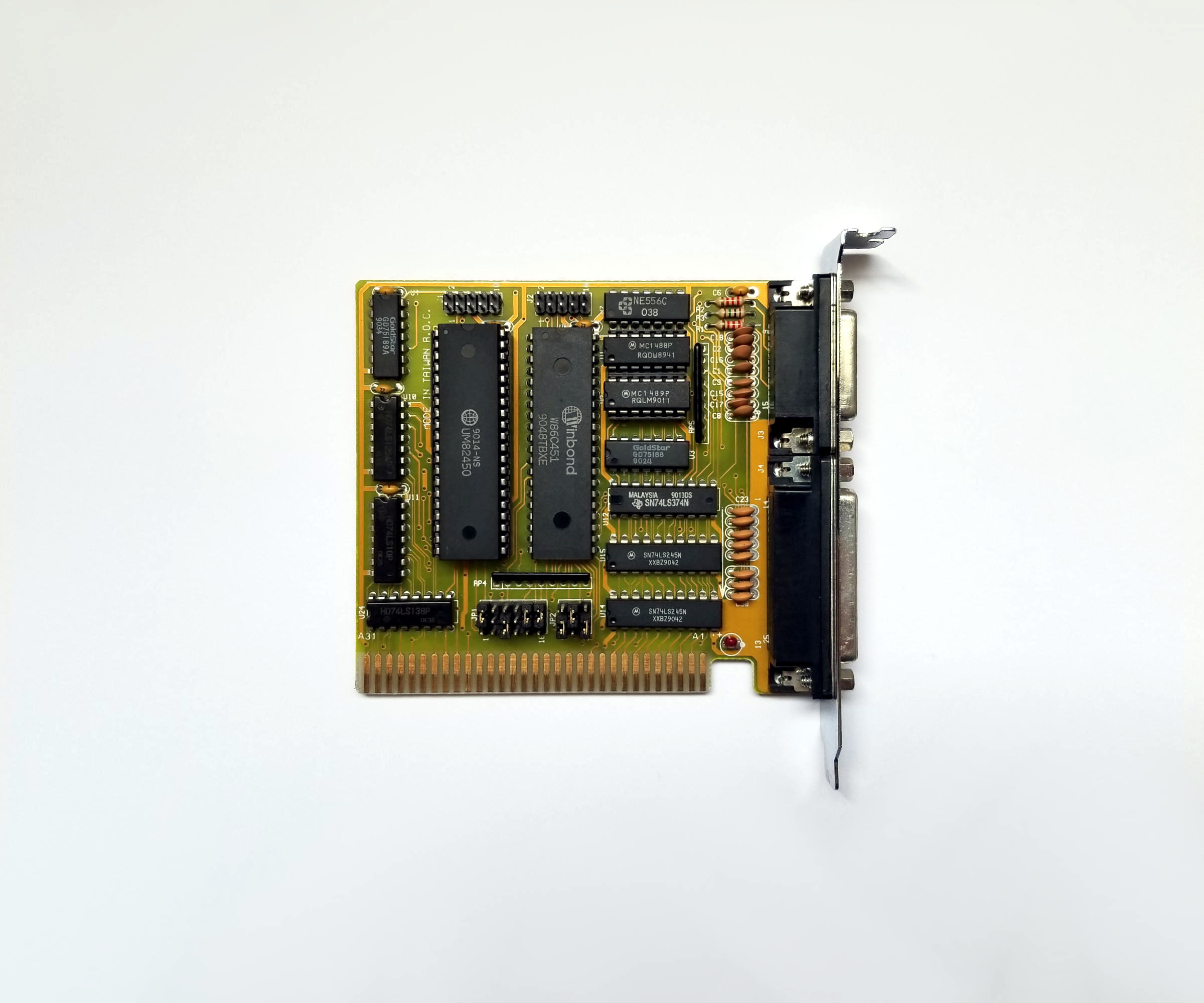
Smart watch module:
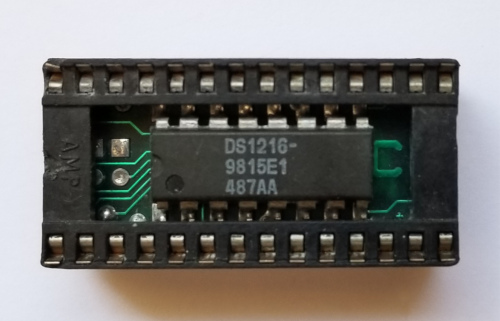
The Tandy motherboard has 5 ISA slots only.
Also, plugging extension cards in the middle one (number 3) interferes with the XT-IDE = no BOOT = had to leave it empty.
Plan was to fill it with modem card like the one below, but that was not meant to be. Which is ok - it is not like i have a land phone line anyway.
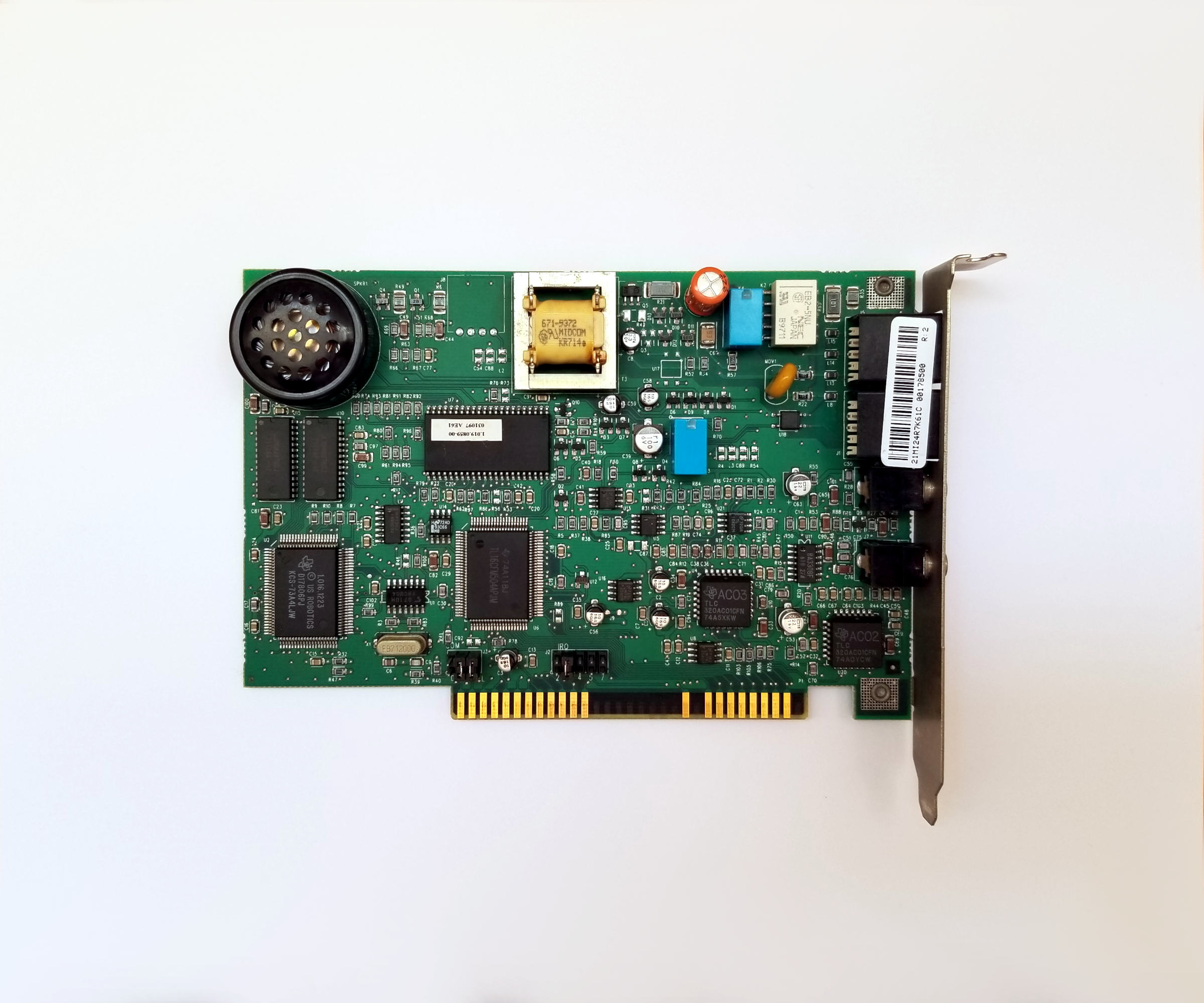
Acculogic RAMpAT! can provide additional 16Mb EMS/XMS RAM.
While the card gets recognized, its driver requires 286, or later processors.
I cannot think of XT class software that will utilize that much memory anyway.
Also, memory expansion cards lower performance.
That is kind of a deal breaker, so for now i don't have the appetite for it.
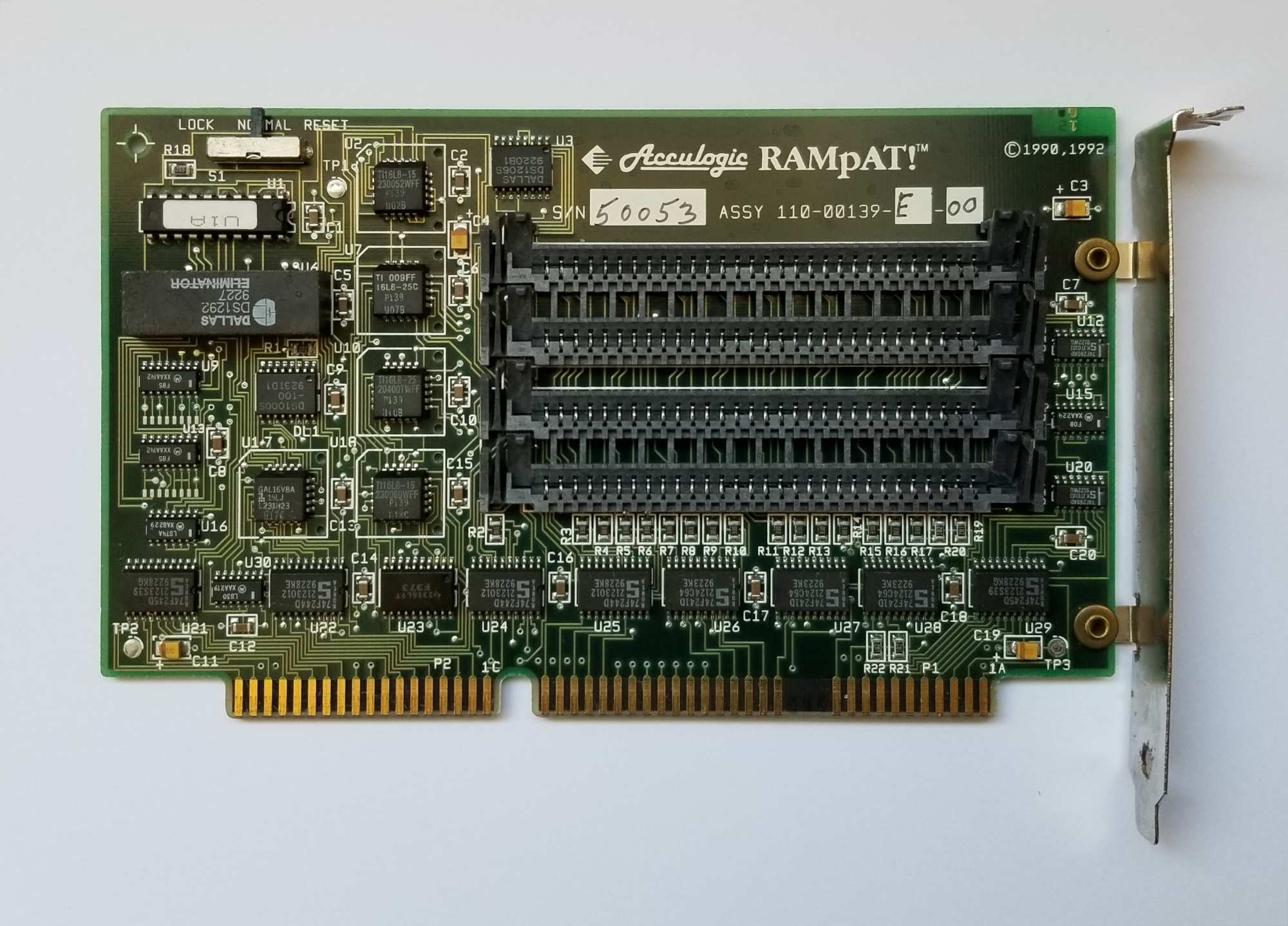
--- BIOS setup
Used Tandy's setupsl.com with /A parameter for advanced settings.
Disabled DeskMate - that desktop makes no sense to me.
Booting instead from XT-IDE into MS-DOS.
All BIOS settings on max except two parameters.
They need to be set to 1 otherwise BOOT to MS-DOS does not complete every time and there is graphics corruption.
Thought it is memory related but after enough go-rounds with different chips and other components i am pretty sure it is a chipset limitation.
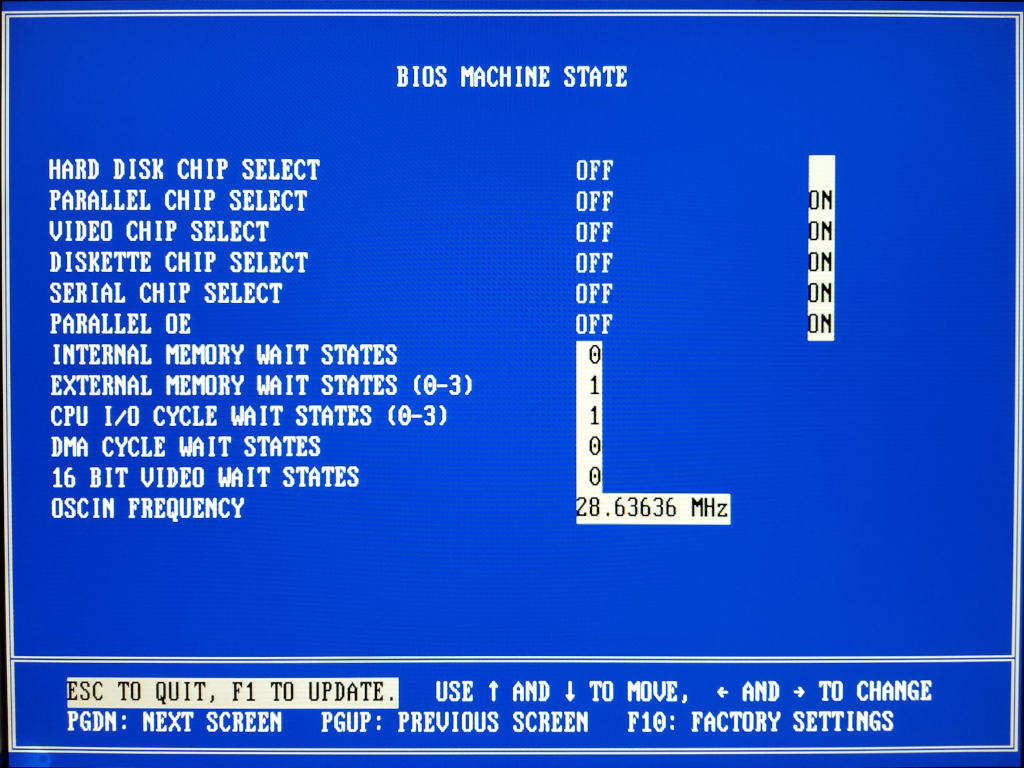
--- Performance
Everything works pretty well at up to 17.13MHz. That is a 51.27MHz crystal oscillator.
Took quite an effort to get there.
Anything above that results in no lights.
Here is what happens at 17.13 / 51.27 MHz:
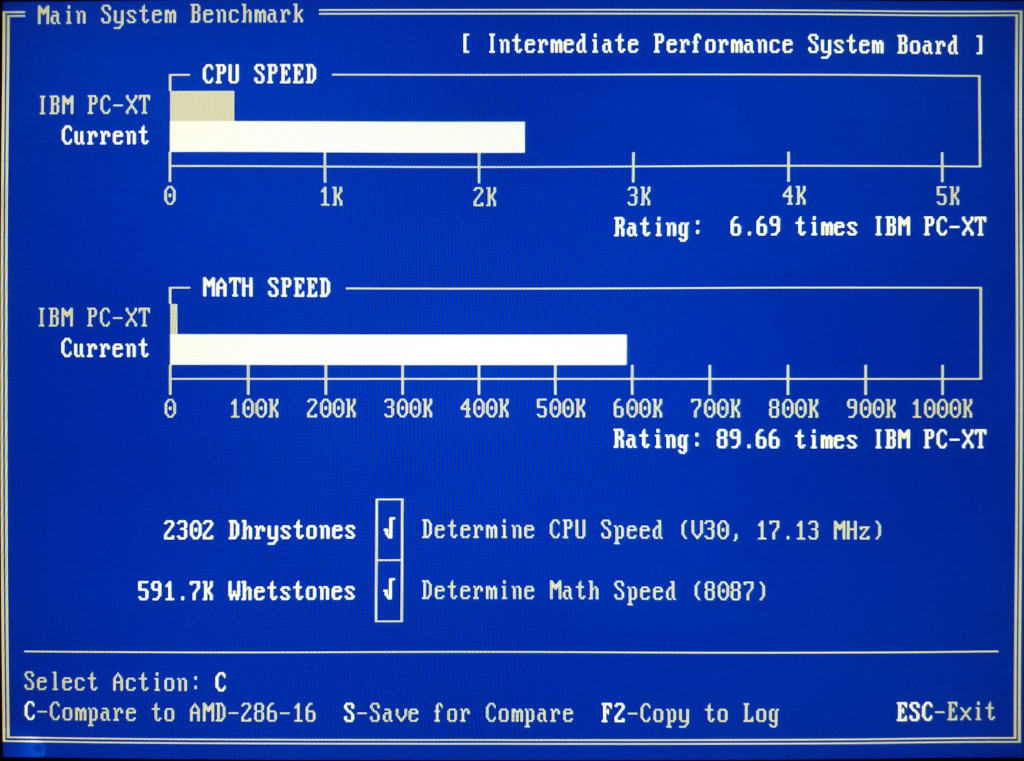
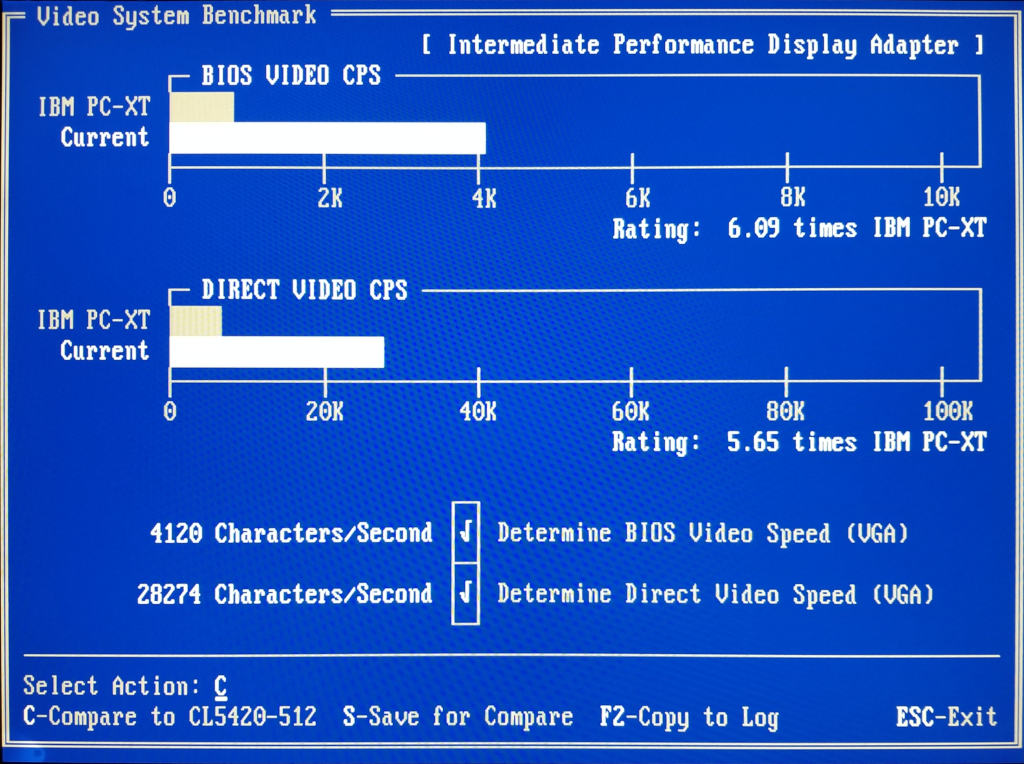
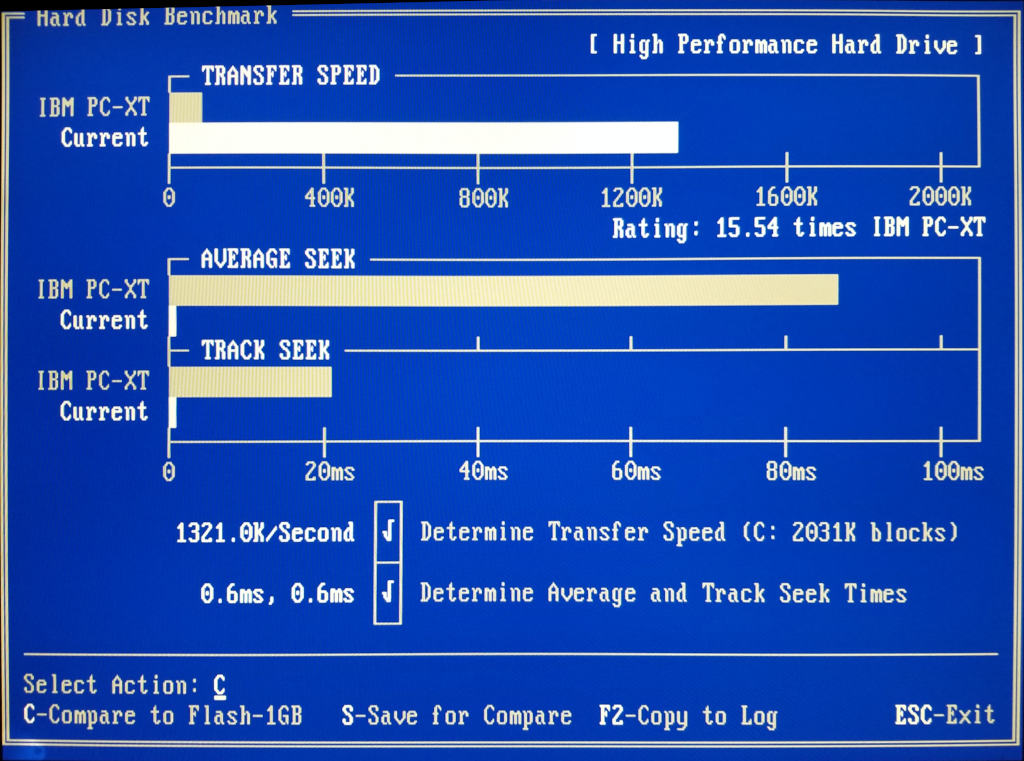
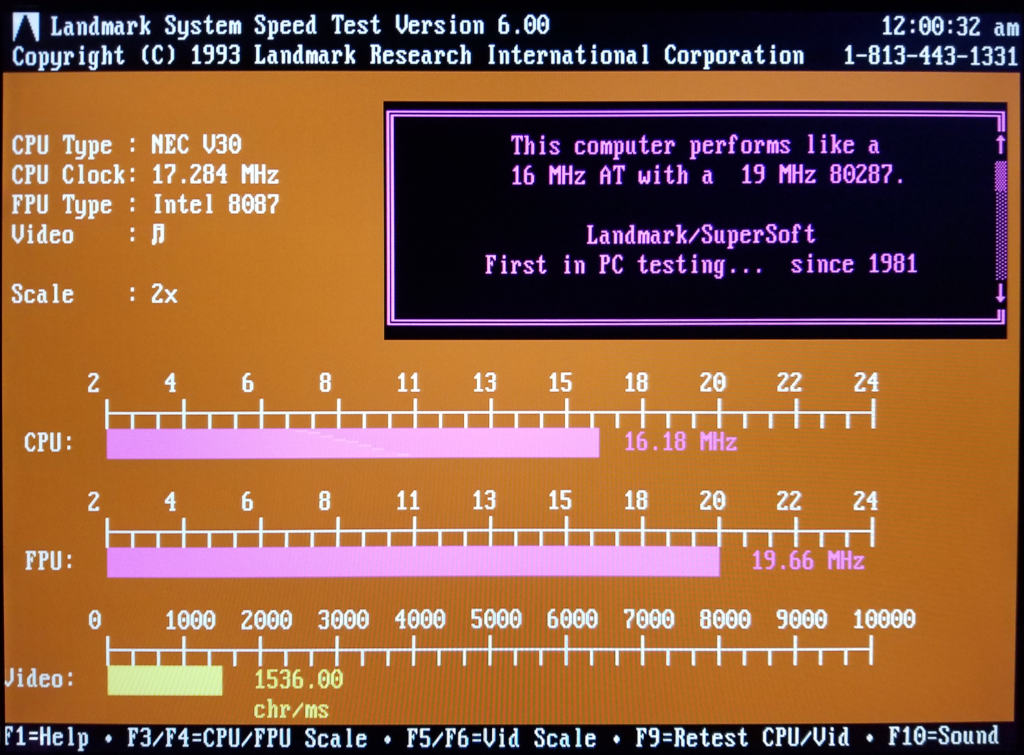
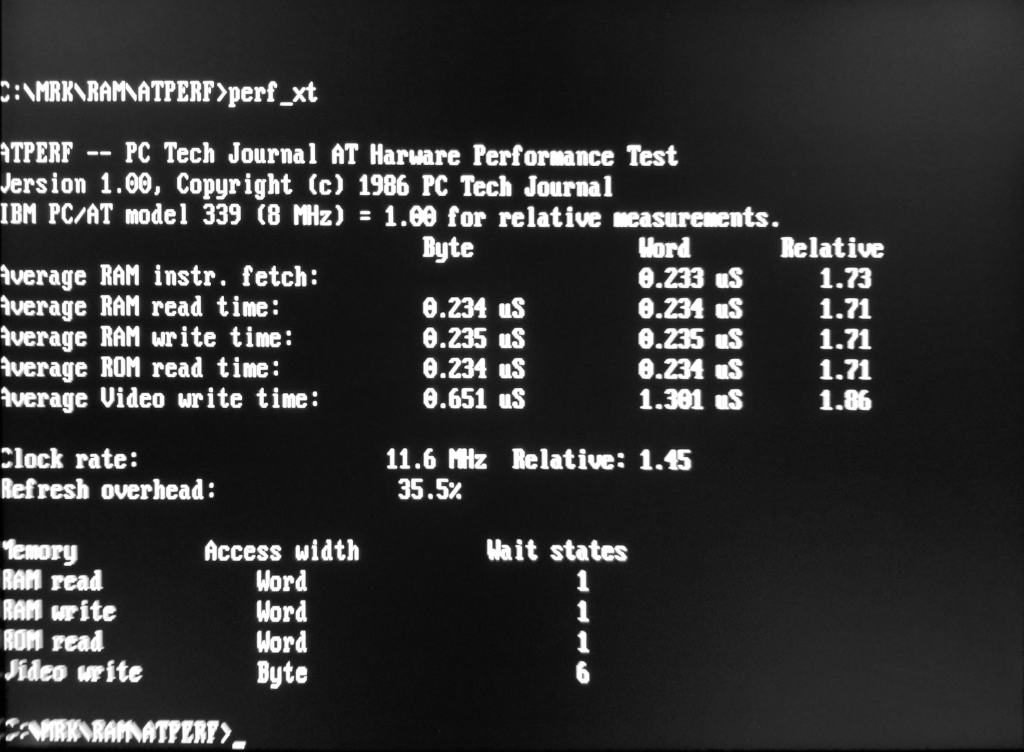
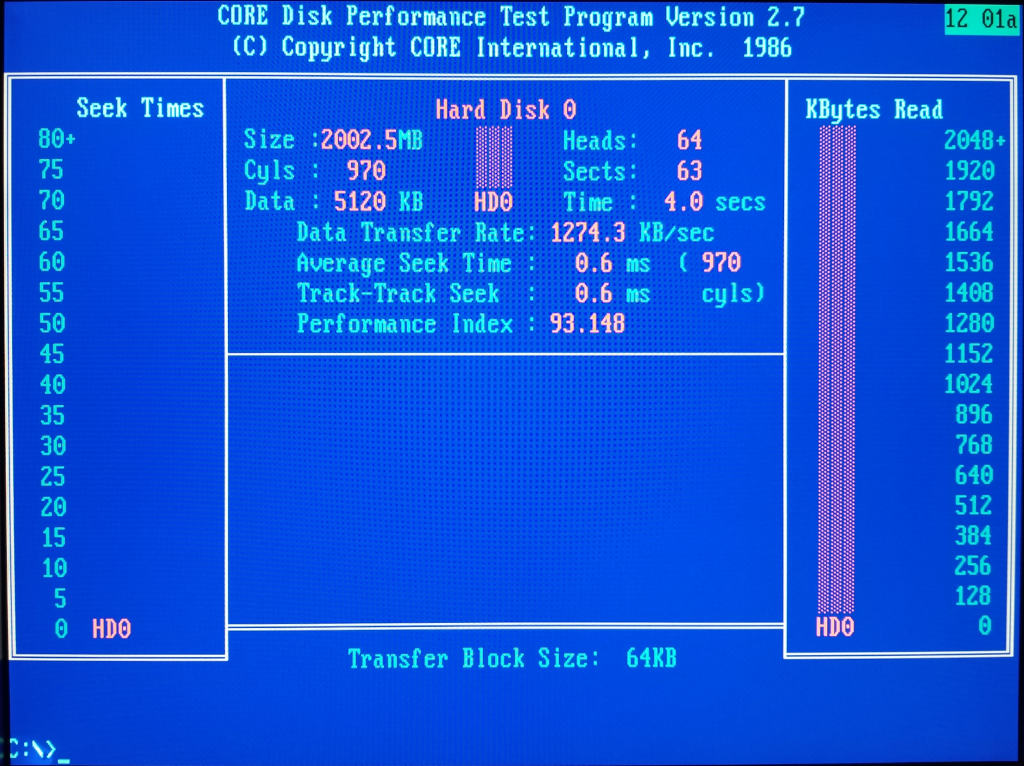
And a test run video with Dune 2, Monkey Island, LHX, Wolf3D, Autodesk Chaos, Deluxe Paint 2 (demonstrating high 8-bit art with mouse from uncomfortable pose), LM6, CheckIt3.
Wolf3D has corrupted graphics. This is not related to overclocking but the 8086 hack itself seems to be flaky.
Had to restart with mouse driver turned off - it affects some of the tests - hardware is that weak. 😀
For the sake of reality - it is not all rainbows and unicorns.
There are 3 problems with overclocking above 10MHz (30MHz oscillator):
1. The system may not light-up right away every time during cold start and needs 1 or 2 additional attempts. It is not related to the used components. Verified this very carefully. Feels like some capacitance needs to build-up. It is a mild issue - instead of once i need to press the start button 1-2 more times.
2. The built-in floppy controller gets flaky. Using third party FDD controller card takes care of it. Didn't consider one in the final configuration. I have no use for floppies really, so the issue is invisible.
3. If i don't use the keyboard within 30 or so seconds upon boot into DOS the system will lock. Noticed the same issue when overclocking some of those 286 VLSI-200 based motherboards. Not sure what is causing it but is a thing.
The only 2 pieces of software that give me trouble are Prince of Persia (the videogame) - character refuses to move but at the same time the runtime is alive and other keys such as Esc and ALT+Q, work fine. EDIT: this is related to digital sound effects. If dont initialize soundcard - all is good.
Autodesk Chaos is not fully stable on 808x hardware regardless of base frequency. It will eventually lock at specific stages with some of the fractal sets.
At the same time Autocad is just fine, as well as all games (but PoP) I tried so far.
I am inclined to pin it on the Prince and Chaos implementations than the hardware they are running on.
---
Beefing-up XTs is not a popular sport these days.
Anonymous Coward has a cool thing documented.
There is another Tandy OC thread on Vogons.
And that's pretty much it.
Working on the Mandy build brought good and warm memories from back in the day.
The XTs i knew at the time were far apart from the quality and speed of this assembly.
Norm was some 3Kg heavy 200-300Kb/s crunchy hard drives (for those lucky to have them), 4-5MHz CPUs, what FPU ?, ~200-300Kb RAM, Hercules or CGA graphics.
So, it was great experience to see how far can push the 8/16-bits.
Turned out they can go places.
The result can easily be one of the fastest XT computers out there.
benchmark results


























